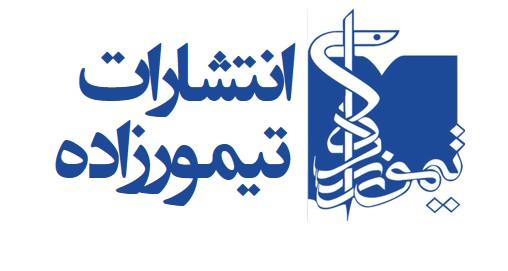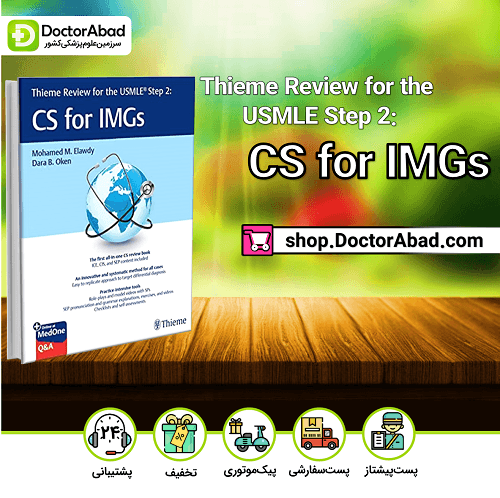
Behavioral Medicine A Guide for Clinical Practice 5th Edition 2020(نشر تیمورزاده)
پزشکی رفتاری راهنمایی برای متخصصان بالینی ویرایش پنجم 2020
- توضیحات
- مشخصات
- مرتبط
- نظرات
Preface
Behavioral Medicine A Guide Behavioral Medicine A Guide
Since the publication of the fourth edition of Behavioral Medicine A Guide for Clinical Practice, there have been considerable advances in medical diagnosis and treatment, as well as changes in the ways in which health care is organized and delivered. The science of genetics has revolutionized the understanding of disease, and we have entered the era of personalized medicine in which therapies are not only targeted to specific diseases, but increasingly, to specific individuals. New medications, therapies, and technologies are continually emerging for the treatment of a variety of behavioral health problems, such as mood and anxiety disorders and substance use.
Collaborative models of care for patients with mental and behavioral disorders have been shown to improve clinical outcomes and are increasingly being integrated into medical settings. The rapid adoption of electronic medical records as the standard in most treatment settings continues to pose challenges for establishing and maintaining rapport in the clinician–patient relationship. Health care organizations are now compelled to pay greater attention to the importance of clinician well-being in reducing burnout and error and in maximizing the performance of the organization, including financial outcomes.
This fifth edition addresses these and other new developments in the clinical practice and teaching of behavioral medicine. Although the term “behavioral medicine” is used widely in both medical and social science literature, there is little agreement as to its exact definition. We broadly define it as an interdisciplinary field that aims to integrate the biological and psychosocial perspectives on human behavior and to apply them to the practice of medicine. Our perspective includes a behavioral approach to somatic disease, the mental disorders as they commonly appear in medical practice, issues in the clinician–patient relationship, and other important topics that affect the delivery of medical care, such as motivating behavior change, maximizing adherence to medical treatment, integrative medicine, and care of the dying.
This edition features important revisions of chapters from the previous editions to reflect advances in pharmacotherapy and evidence on the relationship between psychosocial factors and disease. New chapters have been added to reflect emerging issues in clinical care. For example, with the continued growth of the opioid epidemic, there was a need for a chapter dedicated to working with patients on these agents. Likewise, the increased recognition of the importance of trauma and its impact on our patients’ health and well-being prompted us to add a chapter dedicated to that important topic.
Untreated behavioral and mental illness contributes to the global burden of disease, and there are marked disparities among nations and regions in recognition of these problems and treatment availability. The chapter on global health and behavioral medicine addresses the cultural and economic determinants of these disparities and offers new models for behavioral medicine practice and training to reduce the treatment gaps. Health outcomes globally are also influenced by environmental factors such as climate change, and human behavior is deemed responsible for a growing stress to the earth and its natural functions. The chapter on environment, health, and behavior examines these interrelationships and suggests behavior change models on a societal scale to promote the health of the planet.
The training of physicians and other health professionals has continued to evolve. Greater clarity in defining and assessing competencies, including that in behavioral medicine, has warranted an extensive expansion of the section on teaching and assessment with an emphasis on new approaches to training for behavioral competencies. Among these are more precise descriptions of behavioral competencies, advances in evaluation, novel teaching strategies such as the use of narrative medicine, and evidence-based behavioral practice. Finally, helping trainees in the health professions to find balance in their lives and to develop the life skills for a sustainable career has challenged medical schools and residencies to create curricula and educational experiences to promote well-being. These concepts are addressed in the final chapter of the book.
We hope that general internists, hospitalists, family practitioners, pediatricians, nurse practitioners, physician assistants, pharmacists, and other clinicians will find that this book helps them to better understand and care for persons with a wide variety of mental and behavioral problems. For residents and students in health care settings, Behavioral Medicine: A Guide for Clinical Practice can function as a valuable resource for understanding the psychosocial dimensions of medicine.
It is our intent that medical educators will find this book to be a clinically relevant text that forms a basis for developing a comprehensive curriculum in behavioral medicine. Training in the core competencies required by the Accreditation Council for Graduate Medical Education (ACGME) will be enhanced by inclusion of topics covered thoroughly in this book, including clinician–patient communication, professionalism, and cultural competence. For faculty and students who wish to explore a topic in greater depth, the suggestions for further reading and web-based resources provided at the end of each chapter will be helpful.
The principles of behavior change discussed in this book apply not only to individuals but also to whole societies as they move through the “stages of change” to alter lifestyles that adversely impact the environment and human health. The health and well-being of our personal lives and of the organizations in which we work are intertwined with the health of our planet. Restoring the proper relationship of humans with the earth in a way that promotes sustainability in the whole system is what Thomas Berry has called “the great work” of our generation. Physicians and other health professionals have a vital role to play in this work, for our own health and well-being will only be as good as the health of the planet.
دکترجون! میتونی همین الان Behavioral Medicine A Guide for Clinical Practice 5th Edition 2020 رو با تخفیف ویژه ارزونتر از همه جا از دکترمارکت سفارش بدی... بزن بریم!
| شناسه محصول | 30372851 |
|---|---|
| نوع | کتاب |
| رشته | پزشکی |
| مقطع | بالینیتخصصی |

 با خرید این محصول 749 سکه دکترکلاب دریافت میکنی!
با خرید این محصول 749 سکه دکترکلاب دریافت میکنی!








